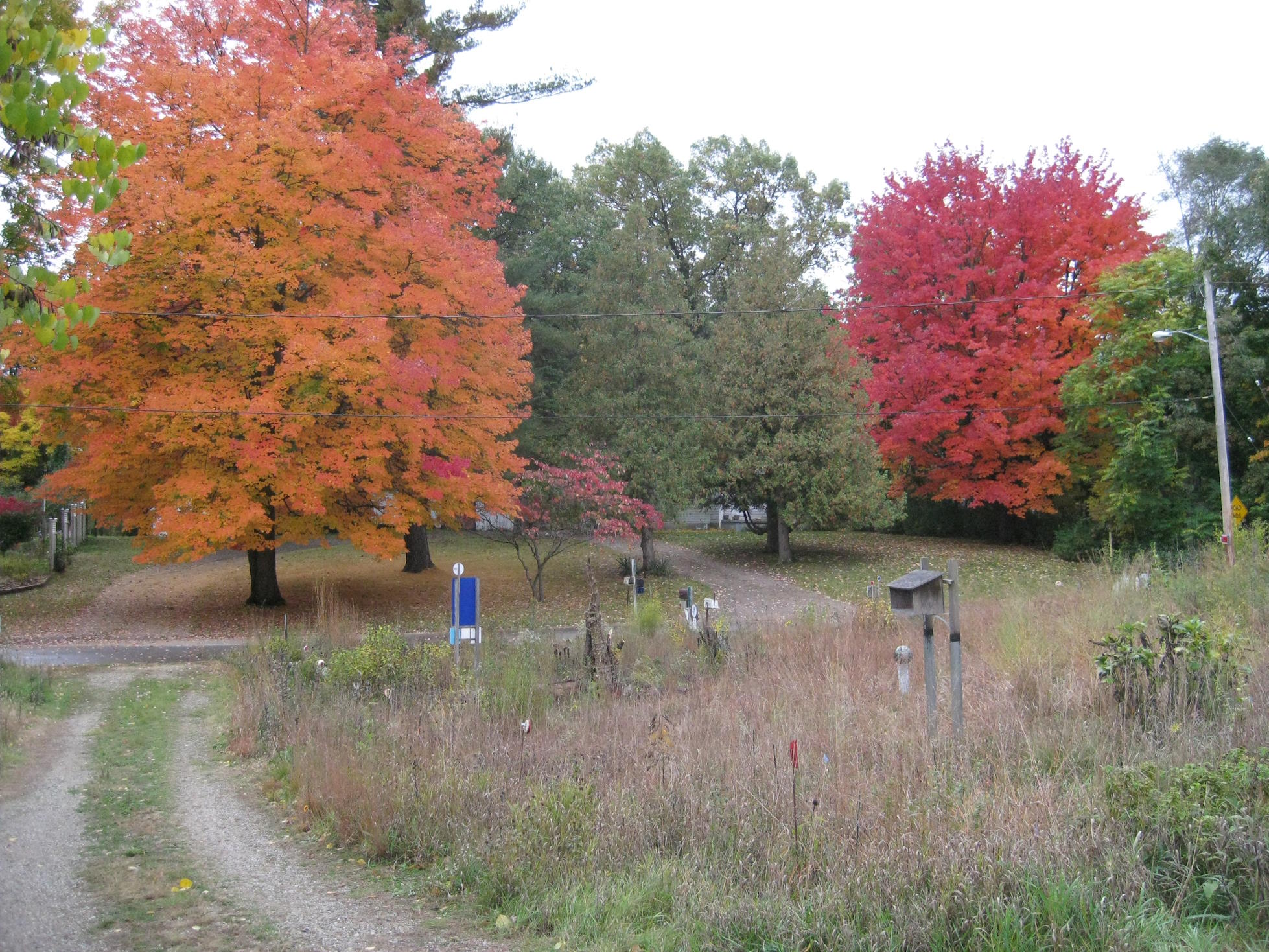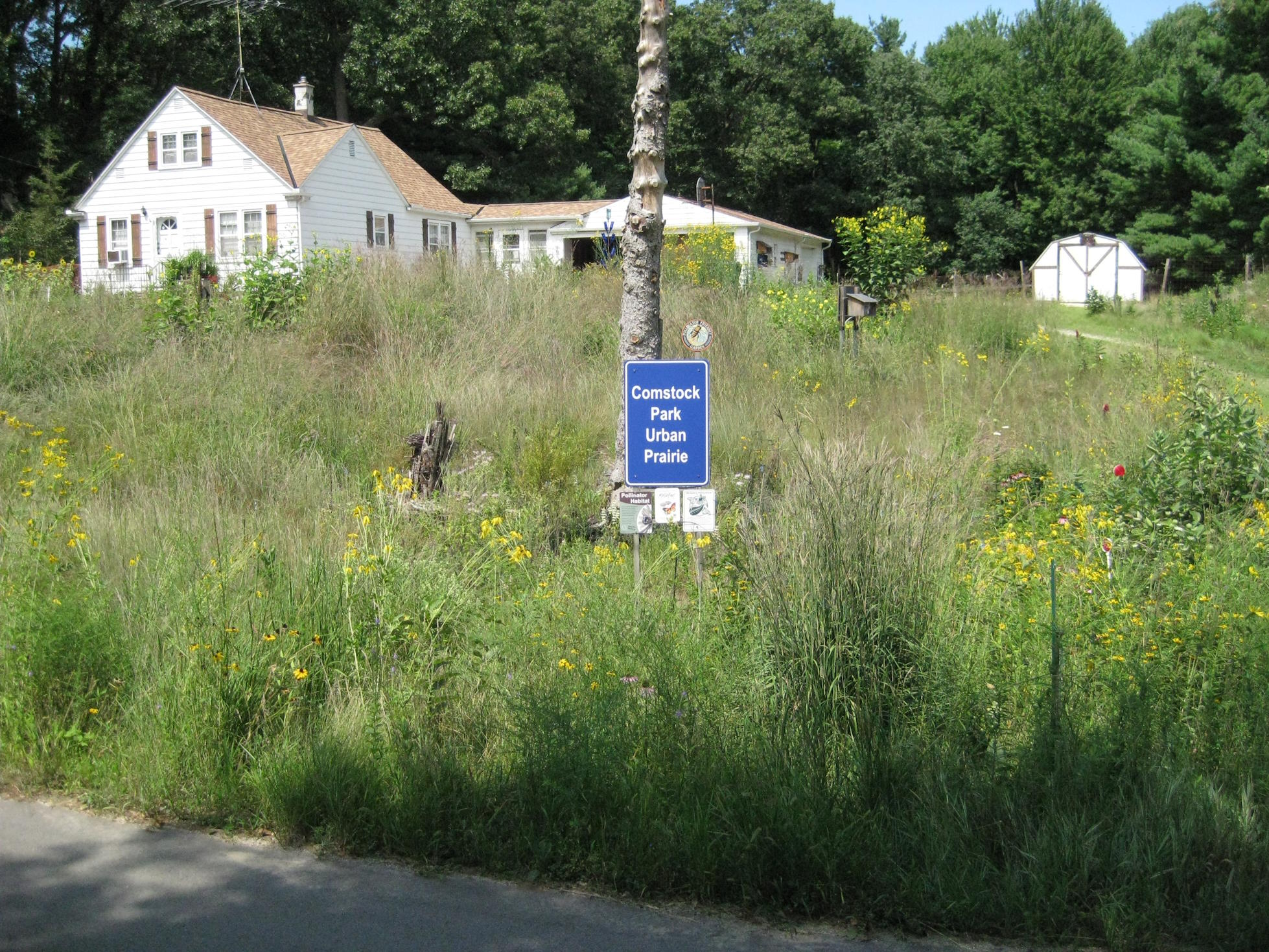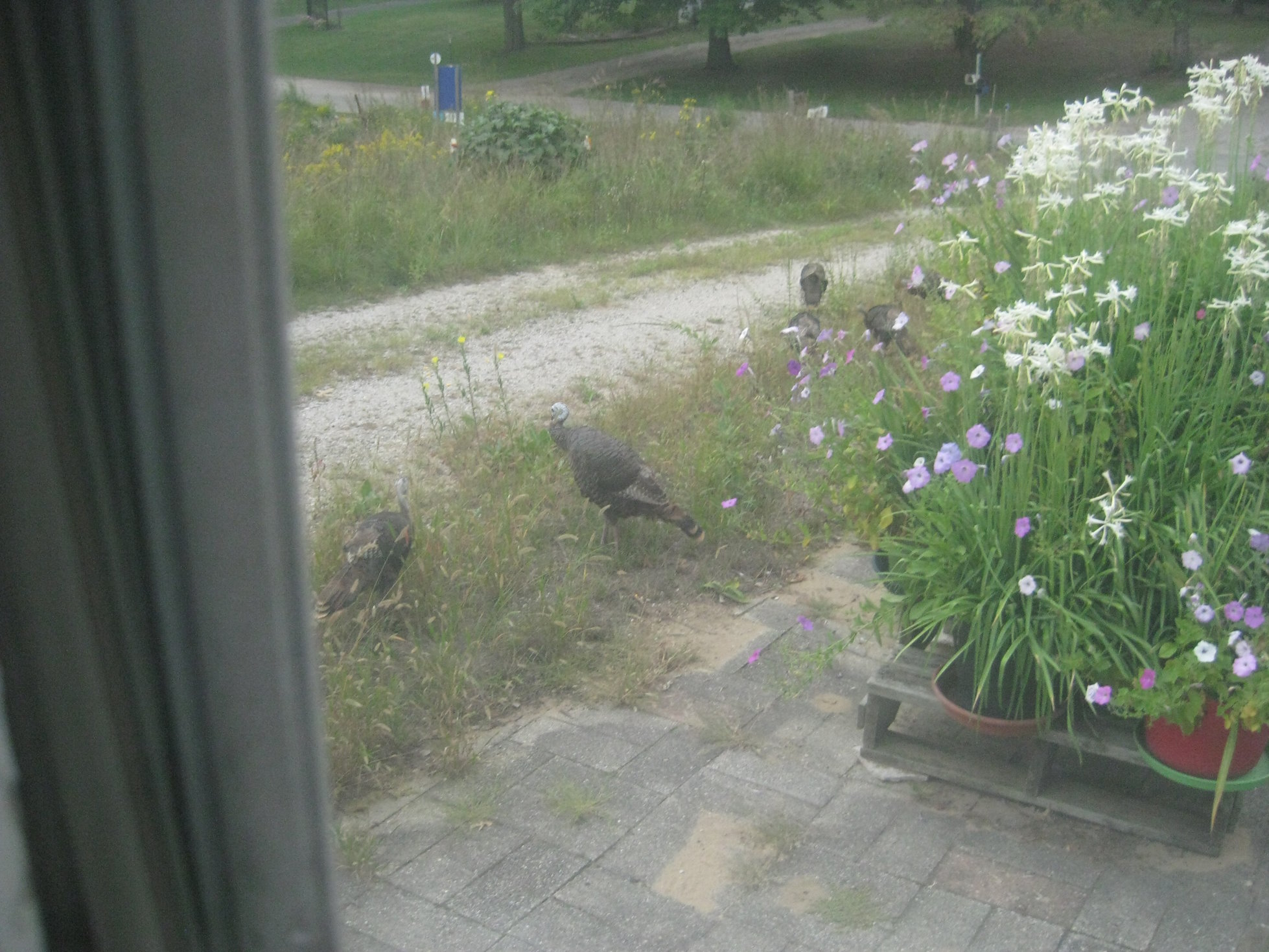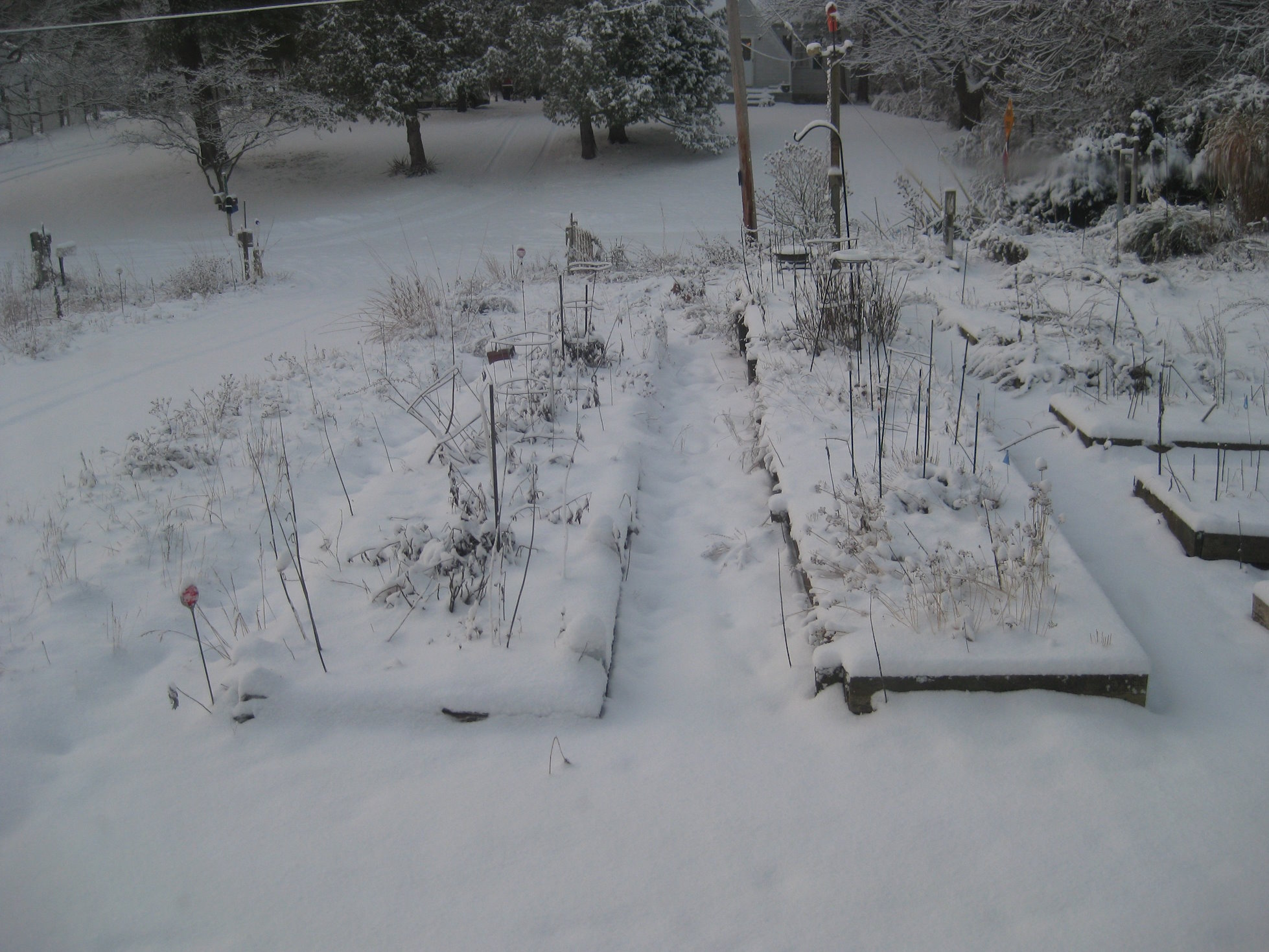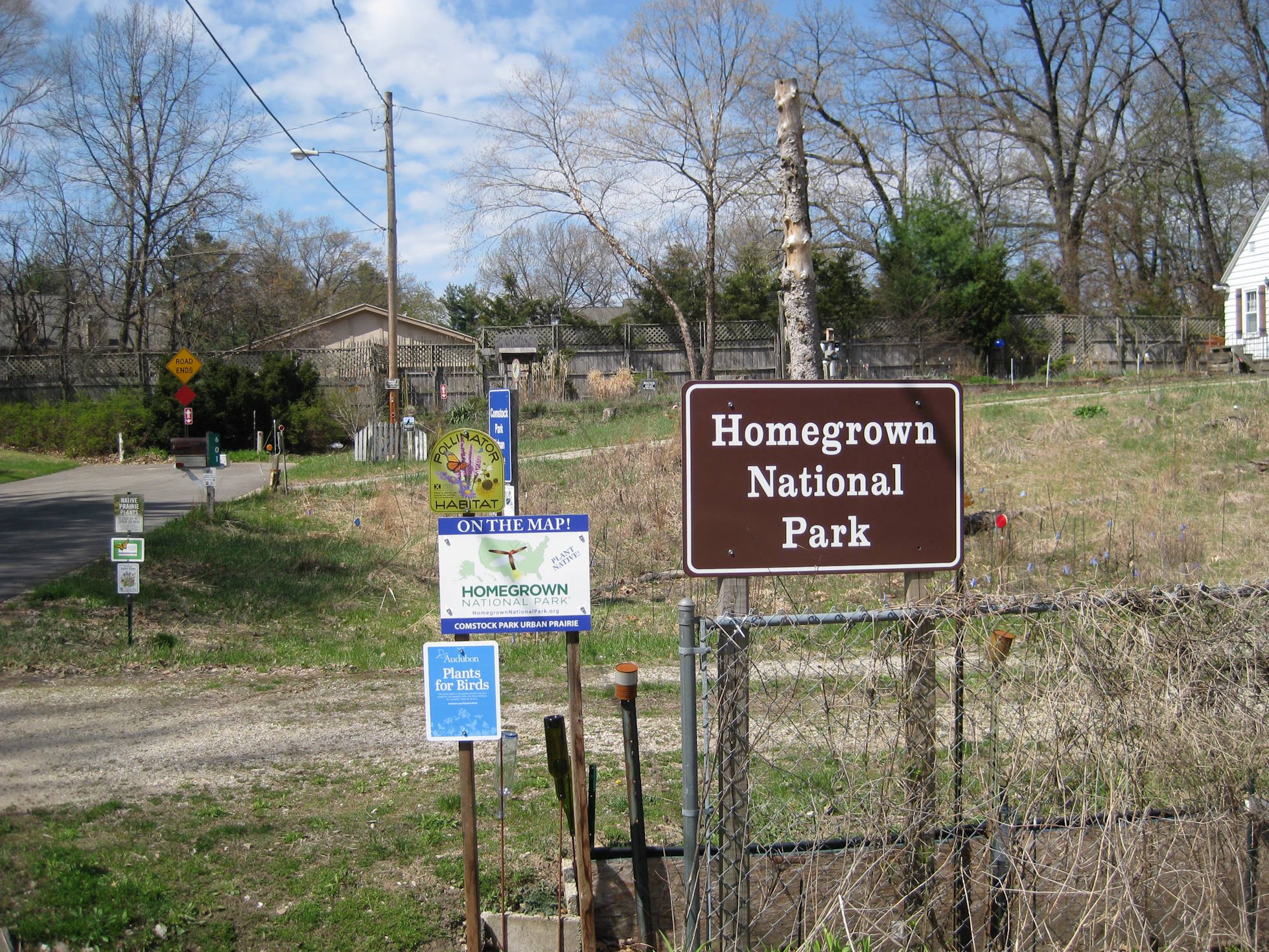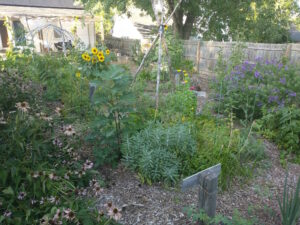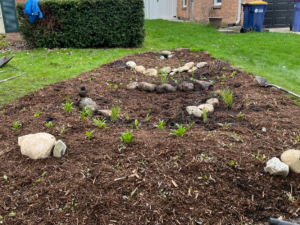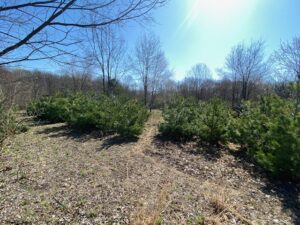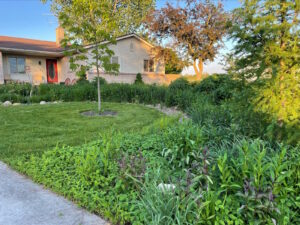I moved to West Michigan in 1996 and managed a traditional landscape with a turf lawn, formal ornamental gardens and veggie and herb gardens. In 2014, I took the MSU Master Naturalist training and was inspired to begin the Comstock Park Urban Prairie (CPUP).
CPUP is in constant change and succession, evolving while I strive to “build a shared future for all life.” There is a rain garden, chocolate box ecology, mini tallgrass prairie, sand prairie, raised beds, connectors, invertebrate meadow, beetle bank, shade garden, and woodland edge. The habitat adjoins a larger woodlot but is otherwise surrounded by the standard suburban monoculture.
I am a biodiversity conservation geographer, advanced master gardener, master naturalist, MSU Pollinator Champion, and steward with the Kent Conservation District. My four guiding principles for Comstock Park Urban Prairie:
- Support the Food Web
- Support a Diverse Complex of Pollinators
- Manage the Watershed
- Sequester Carbon

